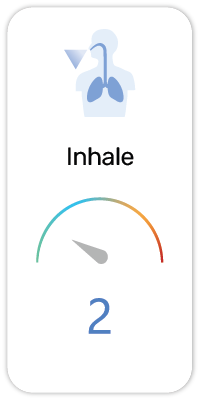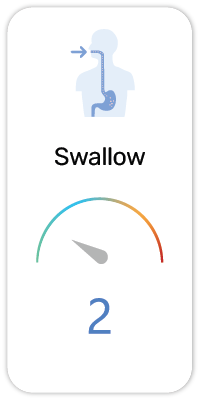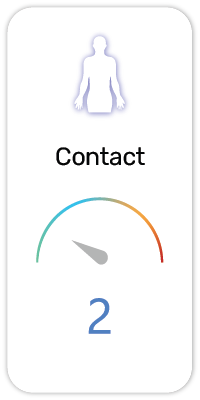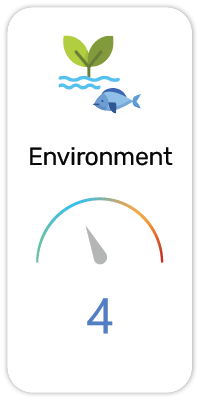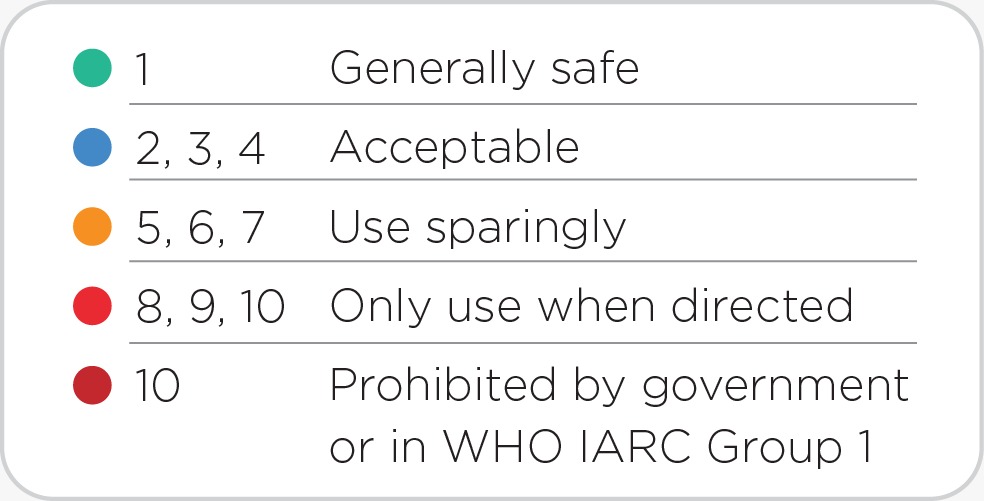Thioctic Acid(in 716 products)
Potential Risk Index®:
About:
Functions:
1. Antioxidant - Reduces oxidation to prevent the formation of free radicals which may be harmful to health.
2. Drug / Medicine - Treats, alleviates, cures, or prevents sickness. As officially declared by a governmental drug/medicine regulatory body
3. Experimental / Patented - Relatively new ingredient with limited data available
Lipoic acid (or α-lipoic acid) is able to pass the blood-brain barrier and is putatively used for detoxification of mercury attached to the brain cells. It can mobilise bound mercury into the blood stream as it is a mercaptan ( sulfur compound which readily binds to the mercury ). In the blood stream, another chelator such as dimercaptosuccinic acid ( DMSA ) or methylsulfonylmethane (MSM) is used to transfer mercury safely into the urine for excretion. Neither DMSA nor MSM can cross the blood-brain barrier, which is why both lipoic acid and DMSA are used. It is hypothesized that this treatment-along with carnitine , dimethylglycine (DMG), Vitamin B6 , folic acid , and magnesium —could be used to treat autism and amalgam poisoning. In this hypothesis, the reason why autism is difficult to treat is that mercury is attached to the brain cells and most medicines and vitamin supplements do not penetrate the blood-brain barrier. However, α-lipoic acid and perhaps vitamin B12 could making it possible for other chelators to remove mercury safely out of the body and could perhaps one day be used as a treatment for autism. Because lipoic acid is related to cellular uptake of glucose and it is both soluble in water and fat, it is being used for treatment in diabetes. It may be helpful for people with Alzheimer's disease or Parkinson's disease.
Scientific References:
1. PubChem: https://pubchem.ncbi.nlm.nih.gov/compound/864
Regulatory References:
1. Japan - Ministry of Health, Labour and Welfare - Restricted Ingredients
- Thioctic acid
Safety and Hazards (UN GHS):
1. Harmful if swallowed (H302)
2. Causes skin irritation (H315)
3. Causes serious eye irritation (H319)
4. May cause respiratory irritation (H335)
5. Harmful to aquatic life with long lasting effects (H412)
Potential Health Concerns For:
1. Catalepsy (PubMed ID:19444377)
2. Dermatitis, Contact (PubMed ID:16842558)
3. Drug Hypersensitivity (PubMed ID:16842558)
4. Movement Disorders (PubMed ID:19444377)
5. Weight Loss (PubMed ID:31068541)
Potential Health Benefits For:
1. Acute Kidney Injury (PubMed ID:15526909)
2. Amyotrophic Lateral Sclerosis (PubMed ID:28641283)
3. Asthenozoospermia (PubMed ID:28880400)
4. Brain Diseases (PubMed ID:20490610)
5. Brain Infarction (PubMed ID:14512146)
6. Brain Injuries (PubMed ID:19715735)
7. Carcinoma, Lewis Lung (PubMed ID:21655919)
8. Cataract (PubMed ID:20597648)
9. Cell Transformation, Neoplastic (PubMed ID:23608068)
10. Chemical and Drug Induced Liver Injury (PubMed ID:18068886)
11. Cognition Disorders (PubMed ID:19669875)
12. Colitis, Ulcerative (PubMed ID:26276312)
13. Coronary Disease (PubMed ID:7908068)
14. Diabetic Angiopathies (PubMed ID:17970755)
15. Diabetic Cardiomyopathies (PubMed ID:19951573)
16. Diabetic Nephropathies (PubMed ID:15309289)
17. Diabetic Neuropathies (PubMed ID:21092474)
18. Diarrhea (PubMed ID:19900424)
19. Drug-Related Side Effects and Adverse Reactions (PubMed ID:20490610)
20. Edema (PubMed ID:19735303)
21. Hyperammonemia (PubMed ID:23880158)
22. Hyperinsulinism (PubMed ID:22664981)
23. Hypertension (PubMed ID:26518973)
24. Hypothermia (PubMed ID:24675228)
25. Infertility, Male (PubMed ID:21195065)
26. Inflammation (PubMed ID:19735303)
27. Insulin Resistance (PubMed ID:22464149)
28. Intestinal Diseases (PubMed ID:19900424)
29. Kidney Diseases (PubMed ID:16236146)
30. Liver Cirrhosis (PubMed ID:21251946)
31. Liver Neoplasms, Experimental (PubMed ID:21786683)
32. Long QT Syndrome (PubMed ID:23474023)
33. Melanoma (PubMed ID:21655919)
34. Mitochondrial Diseases (PubMed ID:20414966)
35. Nerve Degeneration (PubMed ID:18809400)
36. Neurodegenerative Diseases (PubMed ID:23880158)
37. Non-alcoholic Fatty Liver Disease (PubMed ID:22327056)
38. Oligospermia (PubMed ID:28880400)
39. Peripheral Nervous System Diseases (PubMed ID:18809400)
40. Polyneuropathies (PubMed ID:12562664)
41. Prenatal Exposure Delayed Effects (PubMed ID:28070105)
42. Pulmonary Edema (PubMed ID:25215149)
43. Retinitis Pigmentosa (PubMed ID:16849425)
44. Seizures (PubMed ID:19368863)
45. Teratozoospermia (PubMed ID:28880400)
46. Testicular Diseases (PubMed ID:21195065)
47. Urinary Bladder Neoplasms (PubMed ID:21655919)
48. Weight Gain (PubMed ID:18344723)
User Comments:
Submit


